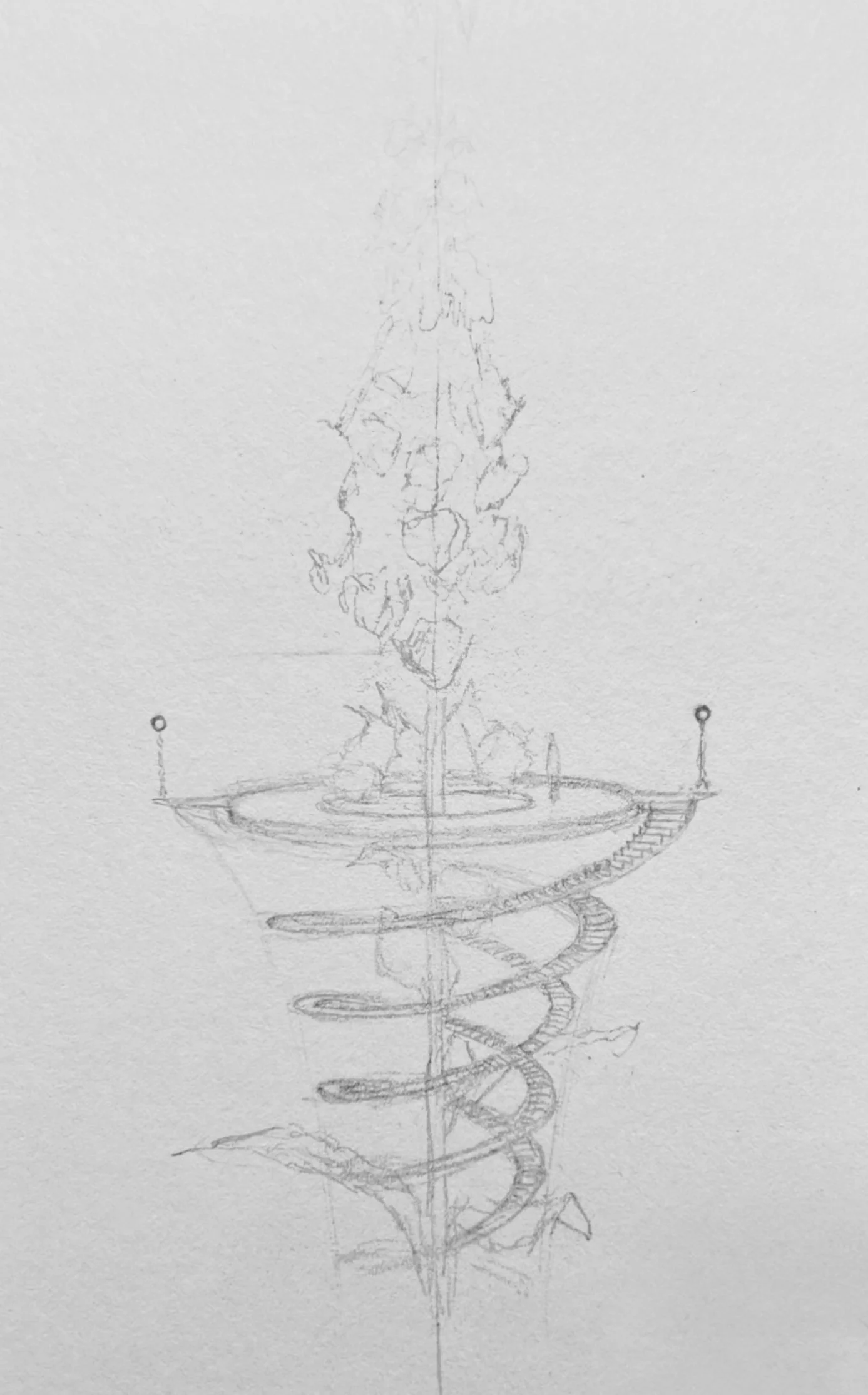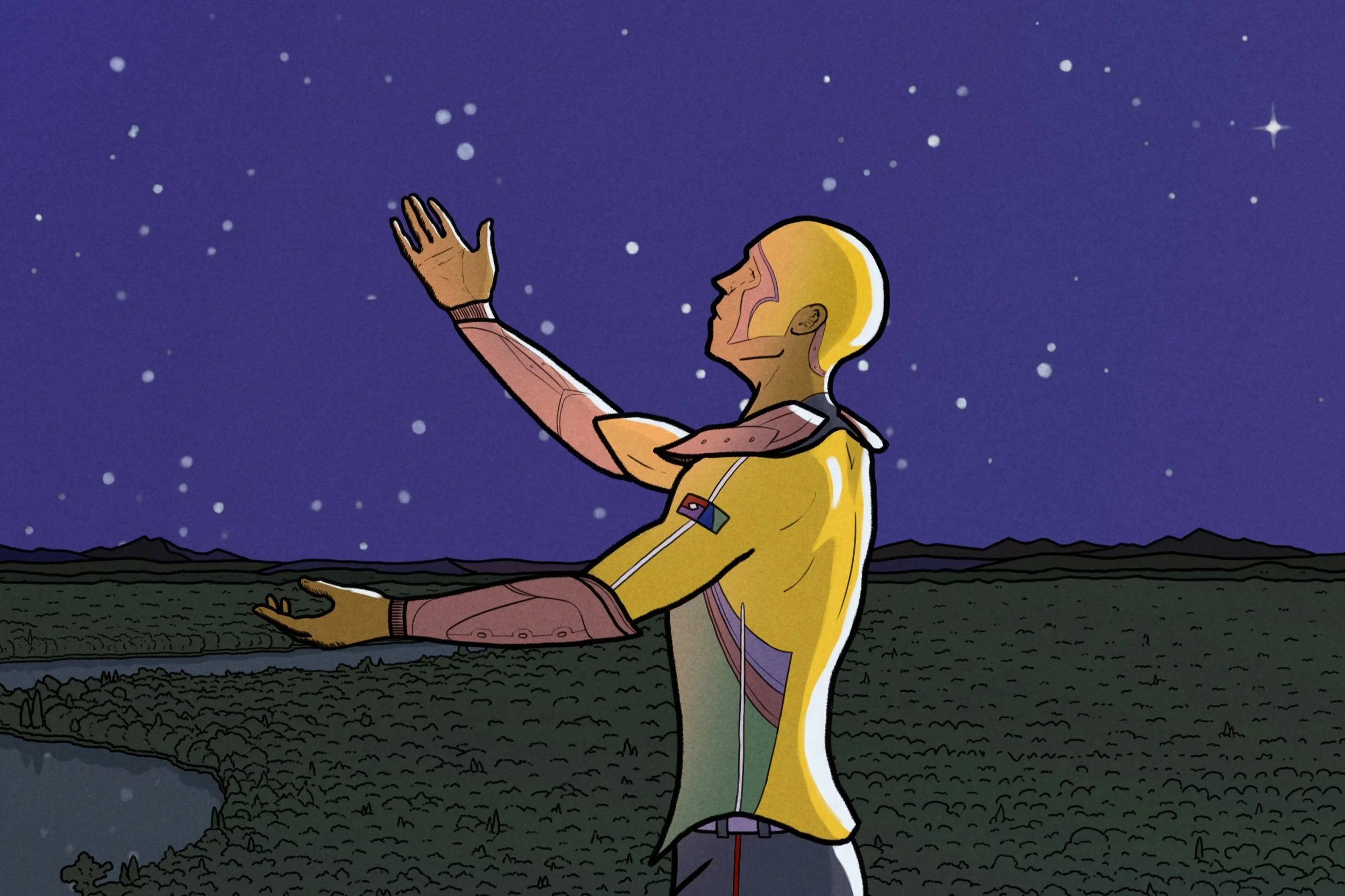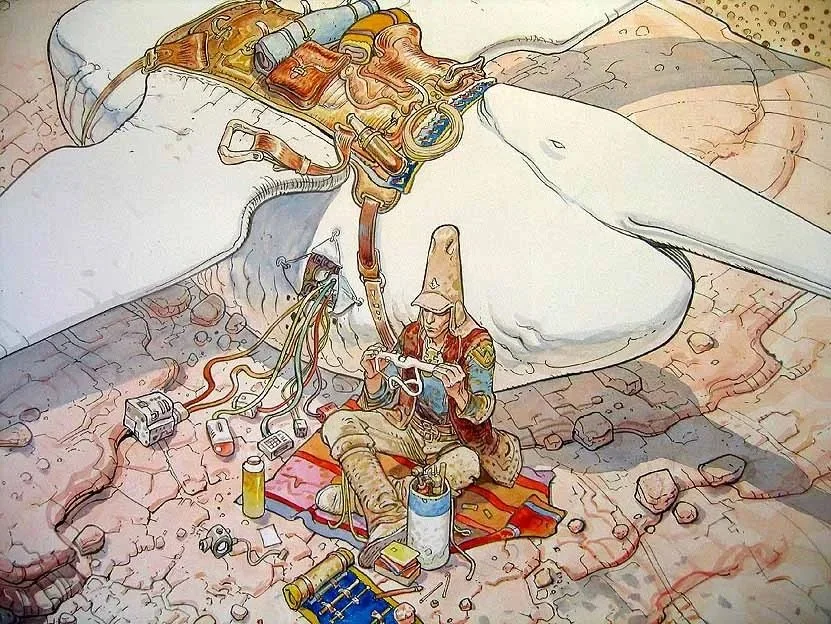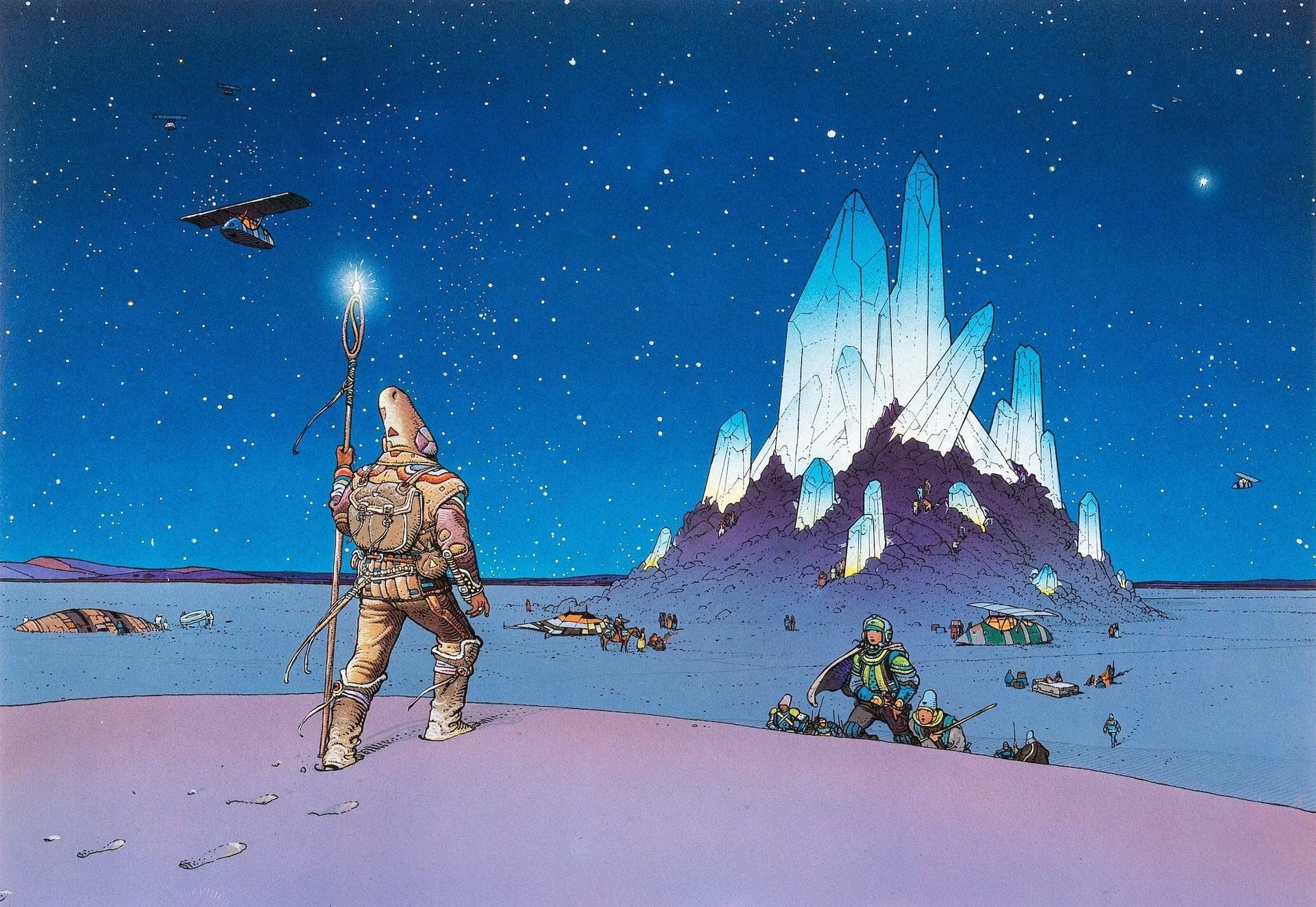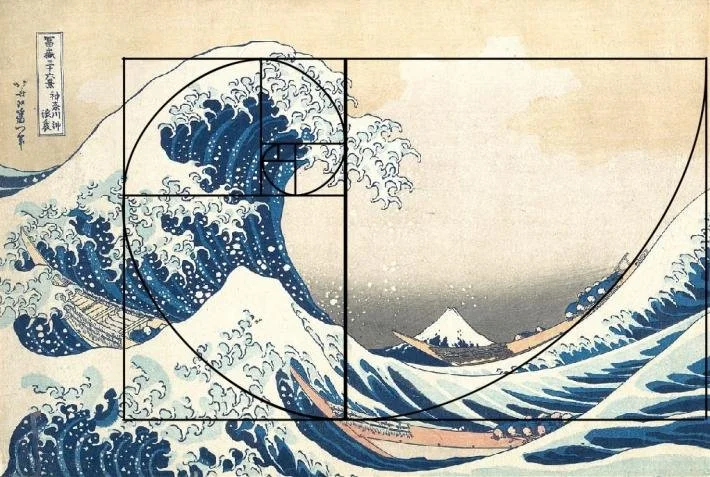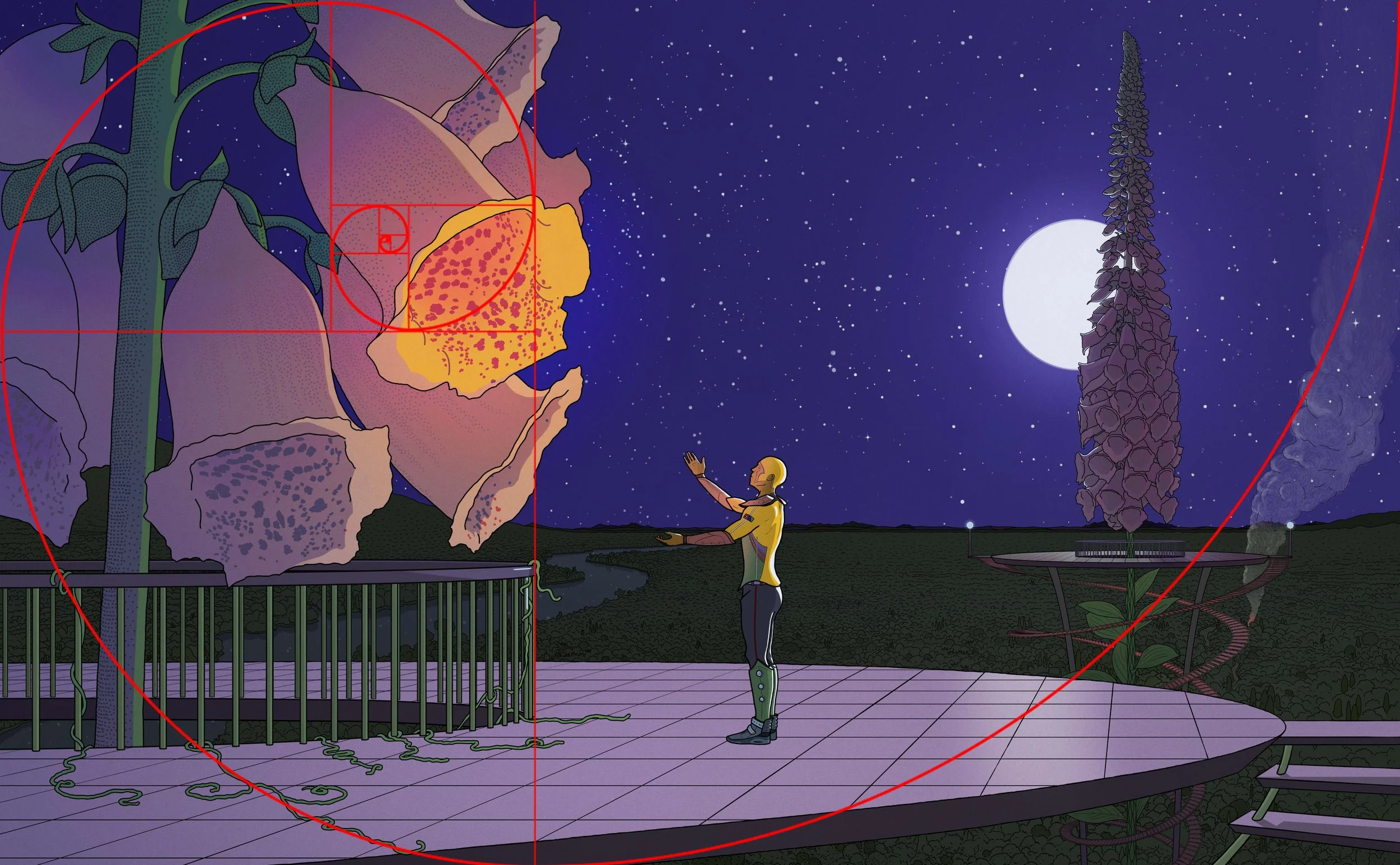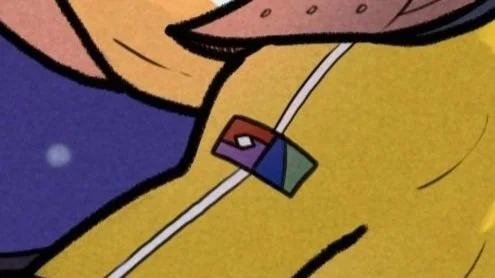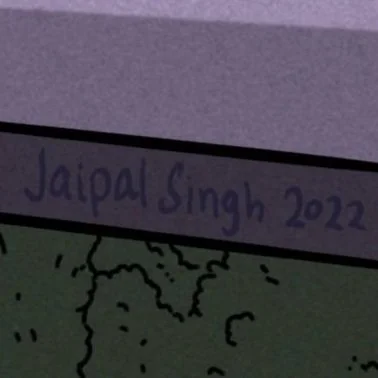See full artwork here: The Call. Digital, 2022.
The Call (2022)
I. Intro
I have come to appreciate the fact that the human brain expresses itself in many different ways. The spoken word is powerfully effective, assuming one is able to articulate the ideas floating around in their head. But how do powerful emotions, inchoate ideas, and the generally ‘inarticulable’ find expression in the world?
For many (including myself), art is one of the most powerful ways of getting that ‘information’ out into the world. I have communicated through artworks things that I was unable to express through words. This is something I only realized in hindsight, and as I’ve written here, I believe this process has largely been subconscious.
In the months leading up to and while working on this piece (2021-2022), I’d been pondering questions like: What is life all about? What is real? and How should I act? (among others). As I ruminated on them, I was influenced by various different types of ideas. Some entered my consciousness through reading and careful consideration, others in musical or visual form. Many (though not all) are discussed below.
This art piece was the byproduct of thinking about these questions. Specifically, it represents the two journeys we take in life, the first being external and the other being internal (within). Before I explain how, a brief visual description:
This scene (below) appears to be taking place in a far-off land. A peculiarly dressed traveler has reached a platform. He stands in front of a giant plant with flowers hanging off its stem. The platform towers high above a thick forest that stretches far into the distance. A river meanders through the forest on the left, smoke rises up to the right, and distant mountains can vaguely be seen lining the horizon. The moon shines in the star-speckled sky.
Another platform is visible further away; it too encircles a giant plant rising high into the night sky. Spiraling staircases provide the only points of access to these lofty perches. Our protagonist looks up at one flower which is angled directly toward him. His gesture and the flower’s glow suggest that some form of communication is taking place…
II. Key influences
Joseph Campbell & the Hero’s Journey
The first journey that I mentioned above is external. This is the exploration out into the physical world (i.e. the ‘regular’ life that we all lead).
How should we orient ourselves as we navigate this path? Humankind has been interested in this question for millennia, and has passed the ‘answers’ down in the form of stories. After all, stories are how we make sense of and ascribe meaning to the chaos of the world.
One of humanity’s most universal stories is the adventure myth of the hero. This story has appeared in everything from ancient myths to popular movies. Joseph Campbell described and helped codify this narrative in his landmark book The Hero With A Thousand Faces. He called it the Hero’s Journey. Its general pattern goes as follows:
A hero is called upon to leave his (or her¹) everyday life behind; he answers this call and moves out into a new world where he makes friends, confronts enemies, and ultimately faces a great ordeal. As he overcomes his personal challenge, he obtains knowledge, power, or something else of value, and in the process is himself transformed. Finally, he returns from whence he came and shares his newly acquired gifts with the wider world.
The hero’s journey is not just to be found in myths and stories (although anyone who is familiar with The Lord of the Rings, The Alchemist, or Star Wars will recognize this archetypal pattern). It is something that we can enact, as it has been shown that framing ourselves as the hero of our own journey is psychologically fortifying and can imbue life with meaning.
Campbell described 17 stages of the Hero’s Journey. One of these stages is the ‘Call to Adventure’. This is the defining moment when the hero must decide whether to leave his familiar life behind and go out on the adventure in the first place (think of Bilbo Baggins at the beginning of The Hobbit).
It is the moment of decision that Michelangelo depicted in the statue of David² (above). Mentors and guides (what Campbell referred to as “supernatural aid”) may help, but whether the hero answers the call to adventure hinges on personal agency. It is up to him and him alone.
This artwork is titled The Call, in reference to this all-important moment. The flower in the piece is partly intended to represent supernatural aid (its exaggerated size underscores this ‘supernatural’ aspect). But our own journey ultimately begins with the voluntary acceptance to embark on it in the first place. (The flower also represents Nature, which I will discuss below)
Scripture, Nature & Art
The second journey of our lives is that of personal & spiritual growth. In his book The Untethered Soul, Michael Singer describes this journey as an inward and upward movement within (“You’re no longer held down to your earthly self… You drift back, and then in and up”).
In the 1988 series Power of Myth, Campbell advocated for putting oneself “in situations that will evoke your higher nature rather than your lower [nature].” The Hindu scripture Bhagavad Gita speaks of different levels of consciousness (called gunas³), as the driving forces of nature: tamas, the lowest level, represents the unconscious; the next level is rajas, the egocentric and uncontrolled mind; and sattva is the detached and harmonious “higher mind”. In the Sikh tradition, the term Chardi Kala describes the state of hope, optimism, joy, and resilience. It literally translates in English to ‘ascending energy’.
While these ideas are all distinct in their own way, the common thread is that there are different levels of consciousness and energy out of which we can operate. Some are ‘higher’ than others. The spiraling staircase in this piece represents the upward movement to this higher energy. (A preparatory sketch of the staircase can be seen below)
But why a flower? Here, the discussion of Nature is important. Many wisdom traditions, from Stoicism to Taoist philosophy, emphasize the importance of living in accordance with Nature. Of course, “Nature” refers to the trees, plants, and animals that are part of the physical world. But the term also refers to our inner or ‘true’ nature.
I wanted this to be the central focus of The Call. The traveler approaching the flower on this elevated platform is meant to represent coming into contact with his own nature. This is integral in the pursuit of self-realization (it is the reason why ‘Know Thyself’ was inscribed at the Temple of Apollo). To summarize: getting in touch with the authentic self is crucial to enabling one’s inner potential to bloom in all its splendor.
The flower’s ethereal glow is meant to indicate that the transmission of some wisdom or insight is taking place. I specifically chose foxgloves because (to me) they appear as if they are saying something. As for the figure standing in front of the flower, I wanted his gestures to tell us something about what he is thinking and feeling. Here I followed the Italian tradition, which used gestures and movements to convey subjects’ inner states. I was specifically inspired by Raphael’s The School of Athens, 1509-1511 (below).
The fresco depicts mathematicians, philosophers, and scientists from classical antiquity exchanging their ideas with one another. At the very center we see Plato and Aristotle engaged in debate. Gesture is central to conveying their exchange: Plato, who believed that ultimate truth exists in immaterial and eternal “Forms” beyond the physical world, points upward. Aristotle, who championed logic, rationality, and the careful study of earthly things, points down. One advocates for the timeless, the other for the tangible. Their motions (up and down, respectively) reflect this.
The traveler in The Call has none of the same assuredness that Raphael’s figures (below) display. I imagined him to be asking some of the aforementioned questions (What is life all about? What is real? How should I act?), rather than asserting his views. His entreating gesture is meant to convey humility, his upturned hands a sign of receptivity to divine wisdom. He is open and willing to consider different ideas, including how the immaterial and material worlds are linked⁴. The flower, thus, is the arbiter of this divine wisdom (or the ‘supernatural aid’ as we have discussed).
Kid Cudi
Like Campbell, Scott Mescudi–the pioneering hip-hop artist better known as Kid Cudi–speaks of personal struggle and heroic adventures through his work. His 2009 breakout album Man on the Moon: The End of Day is actually structured as a Hero’s Journey through different states of consciousness (the album’s narration even refers to him multiple times as “our hero”).
Kid Cudi’s music delves into issues like mental health, addiction, loneliness, and depression, issues that were seldom discussed in hip hop until his emergence in the late 2000s. Despite these heavy topics, Cudi’s overarching message is a hopeful one: Embrace your authentic self and follow your heart (even if that means venturing off on your own). Eventually, you will find what you’re searching for.
The moon is a recurring motif in Cudi’s music. It represents peace and solitude away from the chaos of the world. It is a state of mind rather than a physical place. The album artwork for Man on the Moon III: The Chosen (below) captures this idea visually: ‘Moon’ and Mind clearly overlap.
The depiction of the moon in The Call is a nod to this metaphorical idea.⁵
That album (Man on the Moon III) was released in December 2020, just as I was developing the composition for this piece. As a result, it influenced me greatly. Its penultimate song in particular, called 4 Da Kidz (Spotify), echoes strongly in The Call. The chorus goes as follows:
This is just the right vibe, turn it loud if you need to
Stars in the sky, they will light your way through
Feeling alone, just know you are not
We won't leave you alone
Stars symbolize guidance toward a goal, both literally in helping us find direction, and metaphorically in leading us toward a higher purpose. It is when the path before us is shrouded in darkness and we feel uncertain that we may look to the stars for clarity. Tapping into this knowledge requires faith, open mindedness, and humility.
I wanted this piece to encapsulate all of the above: that we are all travelers on a cosmic journey; that despite our inner struggles, we always have a peaceful place where we can go (here symbolized by the moon); and that even if we end up lost or alone, the stars will guide us.
Moebius
The people and ideas discussed above primarily shaped my thinking from a conceptual and thematic standpoint. With regard to the visual style, however, there was no influence more significant than the French cartoonist Jean Giraud, aka Moebius.
Moebius, who influenced creative works like Star Wars, Dune, and Blade Runner, had a distinct style that has enthralled me ever since I first discovered his work. His art is enigmatic, a genre-bending mix of surrealism, sci-fi, fantasy, and Western imagery. His compositions are deeply imaginative and rich in storytelling. His works feature rocky terrain and expansive deserts, with characters engaged in everything from the mundane (above) to the mystical (below).
Until I began working on this piece in 2021, my artwork had generally tended towards realism: I’ve drawn portraits of real people and copied artworks that exist in the world today. Other artists (like François Schuiten, whose HLM is pictured below) gave me plenty of visual ideas, but it was Moebius who really inspired me to think outside the bounds of the ‘real world’ – to move away from what I know, and imagine a place and time way ‘out there’. Doing so enabled me to delve into the concepts explored above.
III. Other visual elements
Composition: I used the Golden Ratio as a framework for the piece. Also called phi (Φ), the Golden Ratio is a proportion that appears throughout nature, from the spiraling of shells to the branching of trees. Aesthetically, it has been used to achieve harmony and aesthetic appeal⁶, and philosophically it represents the idea that a simple and all-encompassing pattern underlies what we see and experience every day. This idea resonates strongly with me.
The Great Wave off Kanagawa overlaid with the Golden Spiral (which is constructed using the Golden Ratio) can be seen as an example below. The Call overlaid with the Golden Spiral can be seen below that. Notice how visual elements of the composition, from the rising smoke on the right, to the tendrils at the bottom, to the orientation of the flower, track along the spiral.
Stairs: represent ‘upward’ progress on the dual physical-psychospiritual path. The song Around Me by Metro Boomin (Spotify) was released shortly after I completed The Call, but its outro monologue touches on many of the themes we’ve discussed, so I’ve included it in its entirety below:
Heroes are inspired
Emerging only when needed
Revealing themselves to the world in a moment marked by the realization of their ultimate destiny
With backs against the wall, they ascend the winding path of their own fate
Barely knowing the ledge, despite coping with living their whole life as two halves
Moon: a symbolic representation of the moon as a safe and peaceful place (as discussed above).
Stars: a symbolic representation of the guiding force we can turn to whenever we feel lost (also discussed above).
River: symbolizes the ever-changing and fleeting nature of life. Herman Hesse writes about this in Siddhartha: "He saw that the water continually flowed and flowed and yet it was always there; it was always the same and yet every moment it was new." Marcus Aurelius wrote something very similar in Meditations.⁷
Setting: this scene is intended to be setting-agnostic. The pseudo-futuristic clothing and the otherworldly location were chosen because I believe many of the themes mentioned above to be timeless and universal. In other words, they are not bound to a particular time or place. This is also why the traveler’s uniform displays the flag that it does, i.e. a completely made up one (below).
Billowing smoke: represents the wider world and the hero’s responsibility to it. The smoke rises up from what can very faintly be identified as a campfire (a metaphor for society). My intention here was to capture the idea that the Hero’s Journey does not end with one’s own individual progression. Sharing what we have with the wider world is something we should and must do. Joseph Campbell referred to this as “bestowing boons on our fellow man”. This is a central tenet in Sikhism: Guru Nanak (the First Sikh Guru) emphasized Vand Chhako, which means sharing the fruits of one’s labor with the community.
IV. Conclusion
After finishing this piece in 2022, I described it as originating out of a feeling and “a hazy idea”. “It was an exploration,” I wrote, “in conveying something ineffable”. While time has given me the chance to explain the meaning behind this piece, I think that words often fall short in describing what we feel inside–especially that which is expressed through art. Still, if I were to distill this piece down to a simple explanation, it would be this:
Life is an outward and inward journey. I believe the key to progressing on these dual paths is to: answer the call to adventure when it beckons; remain open to the guidance and divine wisdom that is available to us; share whatever is gained with our fellow man; and live in accordance with Nature.
Of course, I would not expect anyone to gather all of this symbolism or these themes simply from looking at The Call (hence this writing). But this is what inspired me as I completed this work. If you’ve made it this far, thank you. I hope you enjoyed reading about this piece and my process.
Footnotes
For simplicity I have used he/him/his pronouns in this essay, but it should be noted that anyone can take on the role of the hero.
Until Michelangelo completed David in 1504, artistic depictions of the Biblical hero either showed him in the midst of his battle with Goliath, or immediately after, usually with the slain giant’s decapitated head in his hand or beneath his feet. But Michelangelo focused on the critical moment before the battle. David is weighing the consequences of his actions: failure would result in death, and victory would make him the hero of his people. Either way, he would be leaving his life as a shepherd behind. This is the precise moment when David (internally) answers the Call to Adventure.
Note: I learned about gunas after completing this piece, but I’ve included it here as it is relevant to the discussion of inward-upward progression.
This is a question I’ve been interested in since finishing this piece, i.e. is the material world the true reality, or is there a place beyond that is ‘more real’ than this? In Hindu and Buddhist thought, Maya (illusion) is used to describe the physical world, indicating a belief in the latter. In Sikhism, Maya refers to the ephemerality of the world rather than its illusory nature. The world is the arena for action and the place where we can fully engage with life and is thus, part of the ultimate ‘reality’.
The aptly-titled 2021 song Moon (Spotify) featuring Kid Cudi is one of many songs that evokes the symbolic imagery of the moon as a state of mind.
It should be noted that there are critics who question the universality of the Golden Ratio and its effectiveness in art. While I am open to these critiques and not staunchly for or against either view, I lean towards the school of thought that sees value in it. In my eyes there is something about the Golden Ratio that does ‘work’/appeal to the naked eye.
From Meditations, Book Five, 23: "Reflect often upon the rapidity with which all existing things, or things coming into existence, sweep past us and are carried away. The great river of Being flows on without a pause; its actions for ever changing, its causes shifting endlessly, hardly a single thing standing still; while ever at hand looms infinity stretching behind and before – the abyss in which all things are lost to sight. In such conditions, surely a man were foolish to gasp and fume and fret, as though the time of his troubling could ever be of long continuance."


